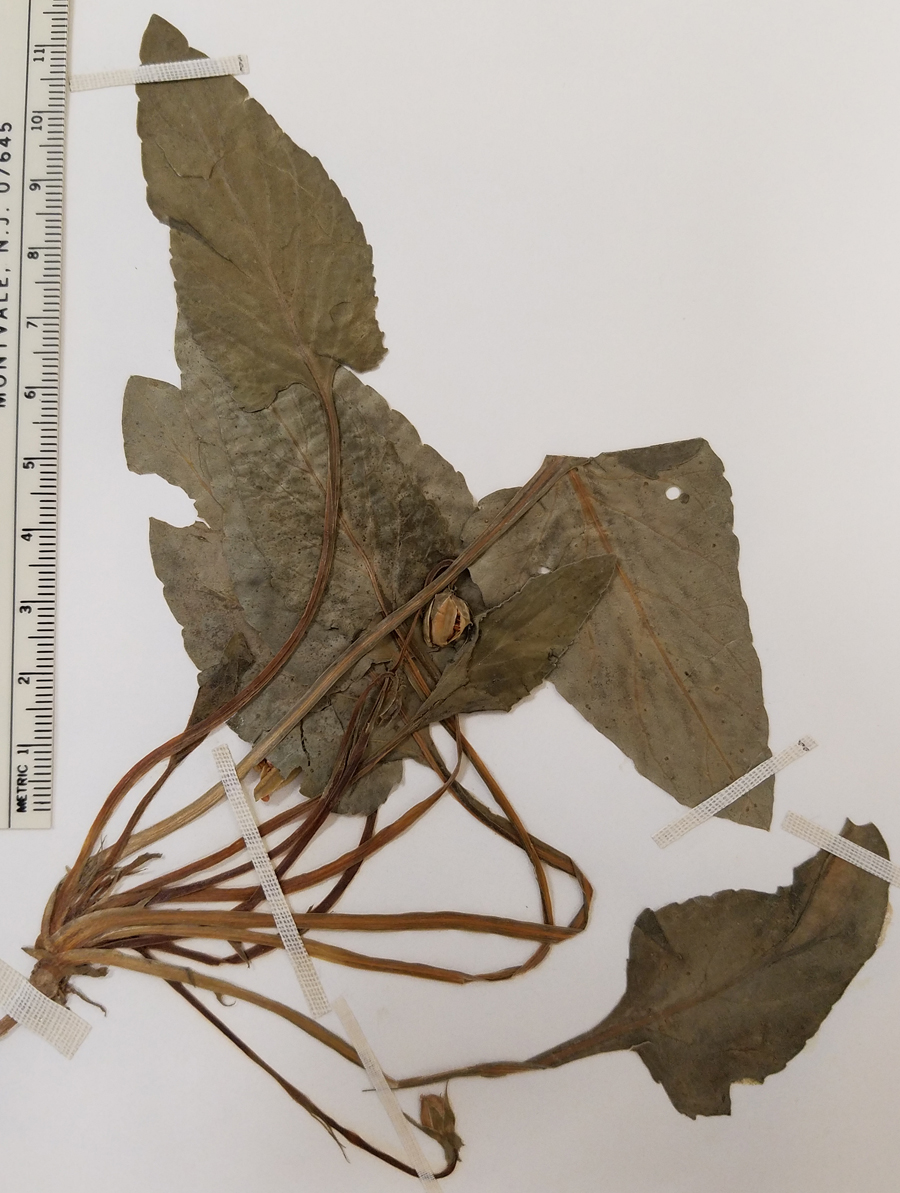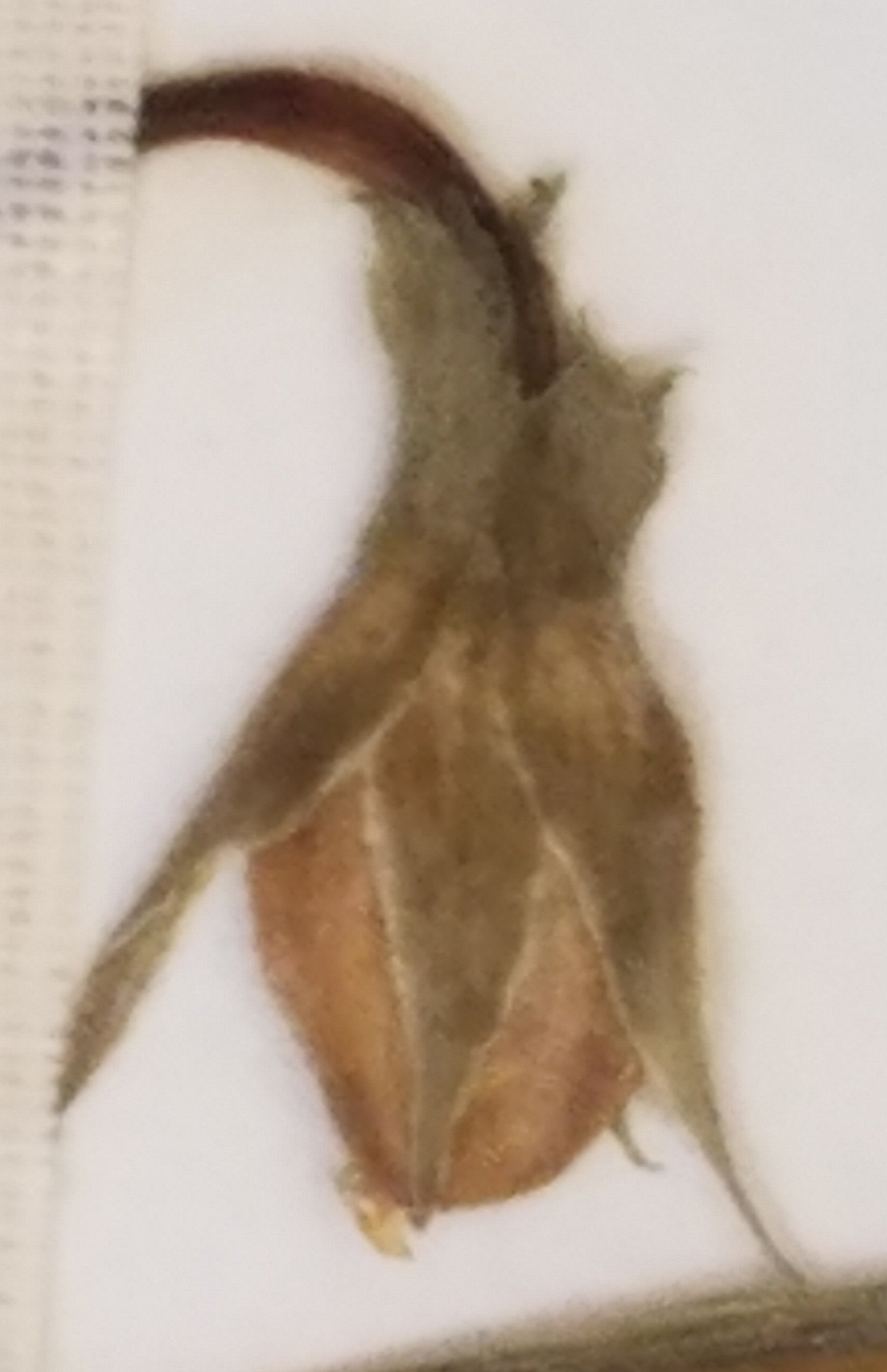Viola japonica Langsd. ex Ging.
Common names:
None in English
Synonyms (incomplete):
Viola japonica Langsd. ex Ging., in DC., Prodr. 1: 295. 1824
Description:
Acaulescent rosulate perennials from somewhat thick rhizome, ≤ 22 cm tall; foliage, peduncles and calyces green, upper surface of leaf blades slightly darker than lower, both surfaces sparsely puberulent or rarely glabrate; stipules adnate to petiole for ca. 2/3 their length, remotely serrulate; petiole not winged, nearly to quite equalling leaf blade during chasmogamous flower, elongating to much longer than blade in fruit; leaves erect, leaf blades undivided, largest ≤ 110 × 50 mm, narrowly ovate, base moderately deeply cordate with basal lobes pointing downward, margins crenate, eciliate, apex acute; chasmogamous peduncle held among the leaves; chasmogamous flower ≤ 12 mm; calyx glabrous, eciliate or ciliate; lowest sepals broadly lanceolate, acuminate; auricles prominent and truncate or erose, elongating in fruit to 3 mm; corolla pale violet to violet, throat white; spur cylindrical, 6&ndash8 mm, white to violet; lateral petals glabrous to sparsely bearded; chasmogamous capsule green, 8–10 mm; cleistogamous flowers produced after chasmogamous, cleistogamous capsule ellipsoid, ca. 1 cm; seeds not reported; 2n=24, 48, 72.
Similar species:
This species and others most similar to it belong to the predominately Asian subsect. Patellares, which consists of acaulescent non-stoloniferous violets with stipules at least half-adnate to their petioles, somewhat to very elongate spurs, and mostly violet to purple corollas. Three species in the subsection that are introduced in our range, including this one, have leaf blades longer than broad. This species differs from V. inconspicua in its sparsely puberulent leaves, much longer spur, and glabrous to sparsely bearded lateral petals. It is distinct from V. patrinii in lacking prominent wings on the proportionally longer petioles, and in its violet to purple corolla.
Ecology:
In Asia it grows in "sunny or half shaded places in lowlands" (Chen et al. 2007); in the U.S., plants inhabit lawns and plantings.
Distribution:
Native to Taiwan, Japan and South Korea; introduced in Argentina, DC, MA, NY.
Rarity:
None.
Phenology:
Chasmogamous flower March and October, fruit May–October (in Asia, Chen et al. 2007).
Affinities:
This species belongs to sect. Plagiostigma Godron, subsect. Patellares (Boiss.) Rouy & Foucaud.
Hybrids:
None.
Comments:
Brainerd (1908) provided the first reports of this species as a spontaneous escape or introduction in the New York Botanical Garden, Harvard Botanical Garden, and an escape following cultivation at hiw own garden and the residence of a colleague in Brookland, DC, and his own garden, under the name Viola chinensis G.Don, a synonym of V. patrinii Ging. These specimens were incorrectly identified and are all Viola japonica. Cullina et al. (2011) reported this species from Middlesex Co., Massachusetts, and a 2018 iNaturalist post confirmed as this was made for plants in the same county. The description was composed from images from the few herbarium specimens available and from Chen et al. (2007).
Literature Cited:
Chen, Y. S., Y. Quin-er, H. Ohba, and V. V. Nikitin. 2007. Violaceae. In Flora of China. Science Press, Beijing and Missouri Botanical Garden Press, St. Louis, Missouri, Vol. 13, pp. 74–111.
Cullina, M.D., B. Connolly, B. Sorrie and P. Somers. 2011. The Vascular Plants of Massachusetts: A County Checklist. MA Natural Heritage & Endangered Species Program, MA Div. of Fisheries and Wildlife, Westborough.

Cleistogamous fruiting habit from herbarium specimen: NY, Transplanted from [New York] Botanical Garden, Bronx Park, September 1905, Spontaneous there, and also now at Middlebury, VT, 28 Jul 1910, E. Brainerd 27 (NY03564752)

Chasmogamous flower profile view from herbarium specimen: NY, New York Botanical Garden, nursery, 25 Apr 1906, R. C. Schneider 22794 (NY03566170)

Cleistogamous fruit from herbarium specimen: NY, Transplanted from [New York] Botanical Garden, Bronx Park, September 1905, Spontaneous there, and also now at Middlebury, VT, 28 Jul 1910, E. Brainerd 27 (NY03564752)

Map by Biota of North America Program